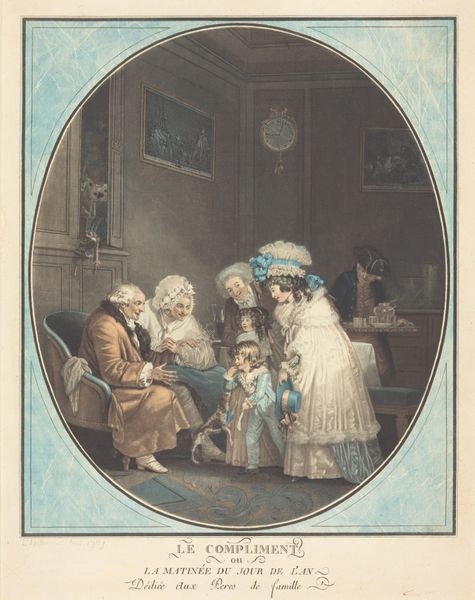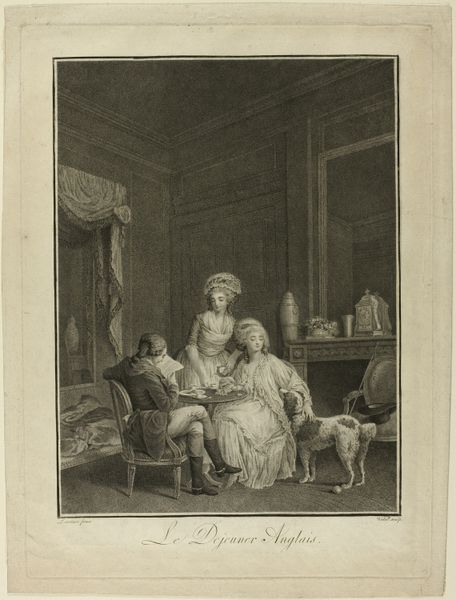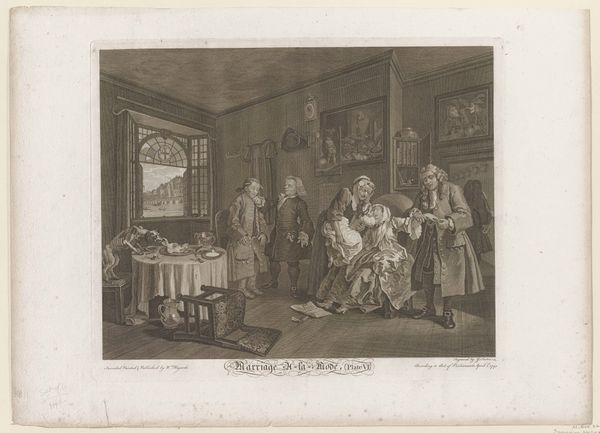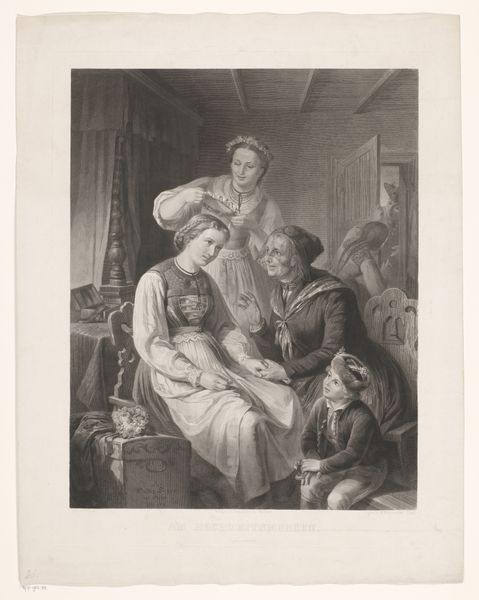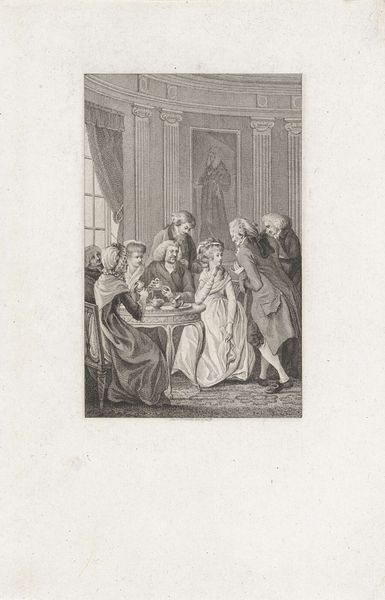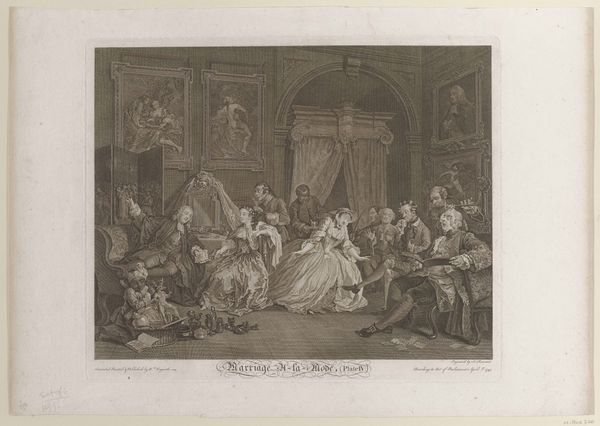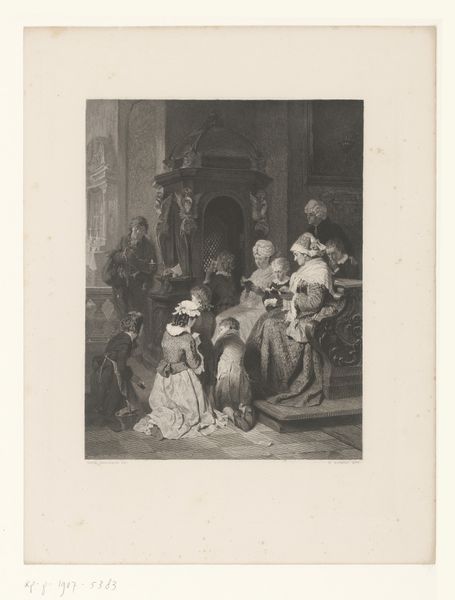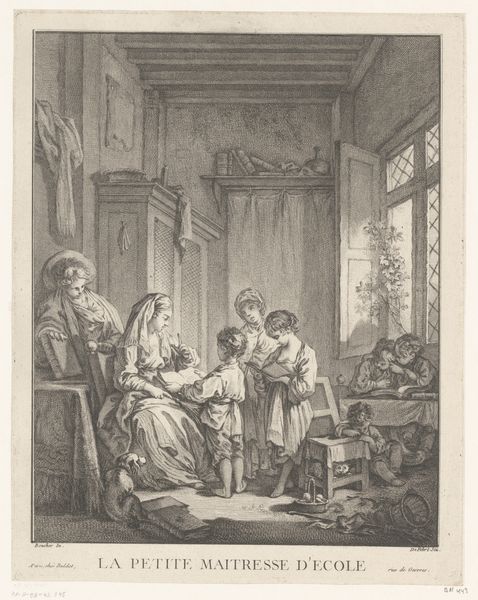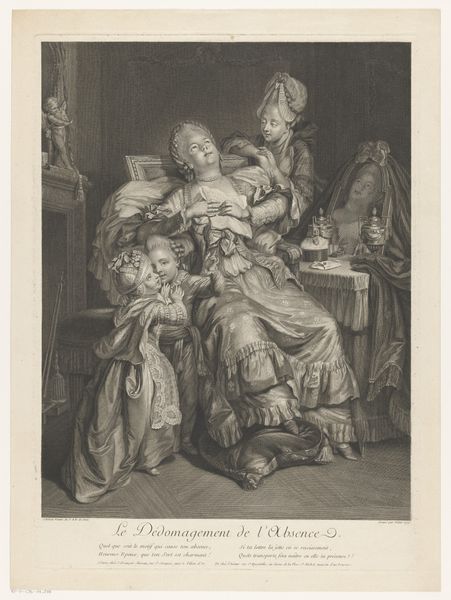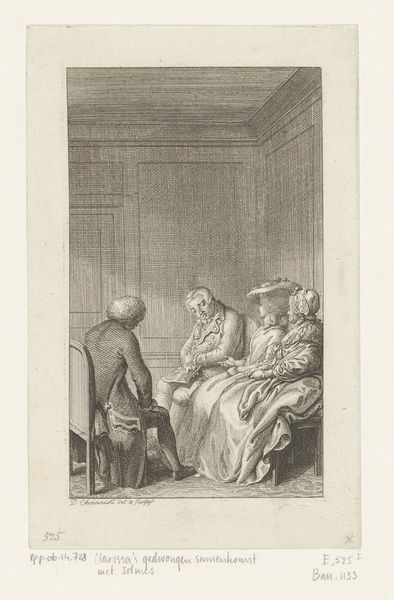
drawing, print, watercolor
#
portrait
#
drawing
#
neoclacissism
# print
#
watercolor
#
historical fashion
#
group-portraits
#
watercolour illustration
#
genre-painting
Dimensions: height 355 mm, width 272 mm
Copyright: Rijks Museum: Open Domain
Editor: Here we have Louis Philibert Debucourt's "Nieuwjaarsdag," created in 1787 using watercolor and printmaking techniques. It portrays a family scene, maybe a New Year's celebration, with this overall pastel palette. What captures your attention about it? Curator: I am immediately drawn to the materiality of the work itself. Consider the choice of printmaking, enabling the mass production and dissemination of this image of bourgeois life. What kind of access did families have to prints at that time? The print’s texture and the layering of watercolors create depth, but also remind us that this intimate scene is, in fact, a constructed object for consumption. Editor: So, the technique itself says something about the society of that era? Curator: Precisely. And observe the fashions: the elaborate hats, the cut of the coats. These are not just decorative details. The cost of these garments reflects economic realities and access to particular materials and trades. Consider, too, who is represented, the social dynamic that would make this representation desirable, and the social dynamics by means of its wide circulation. Editor: I see your point! It’s not just about the aesthetic; it's about who could afford what, and how they wanted to portray themselves. What does it say about labor, about how garments are constructed and consumed? Curator: Exactly! We can analyze the textile production, the social value attached to these manufactured things. In a sense, this image invites us to unpack the material conditions behind the image, the entire chain of making and reception. Even the pigments used in the watercolor hold a material history tied to global trade. What did you think this picture was about at first, before this conversation? Editor: Well, I saw a quaint family scene, but now I understand it’s also a snapshot of production, class, and consumption in 18th-century France! Curator: And that is the beautiful tension—that everyday intimacy cannot be disentangled from material reality!
Comments
No comments
Be the first to comment and join the conversation on the ultimate creative platform.
